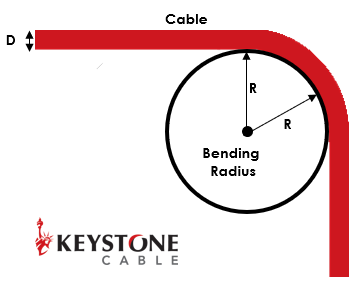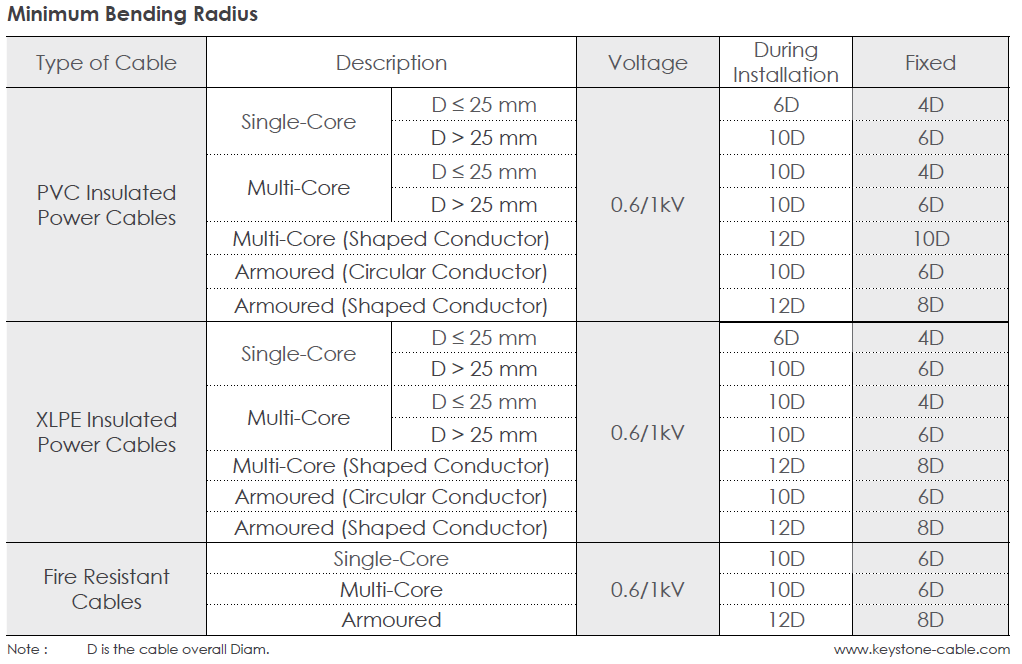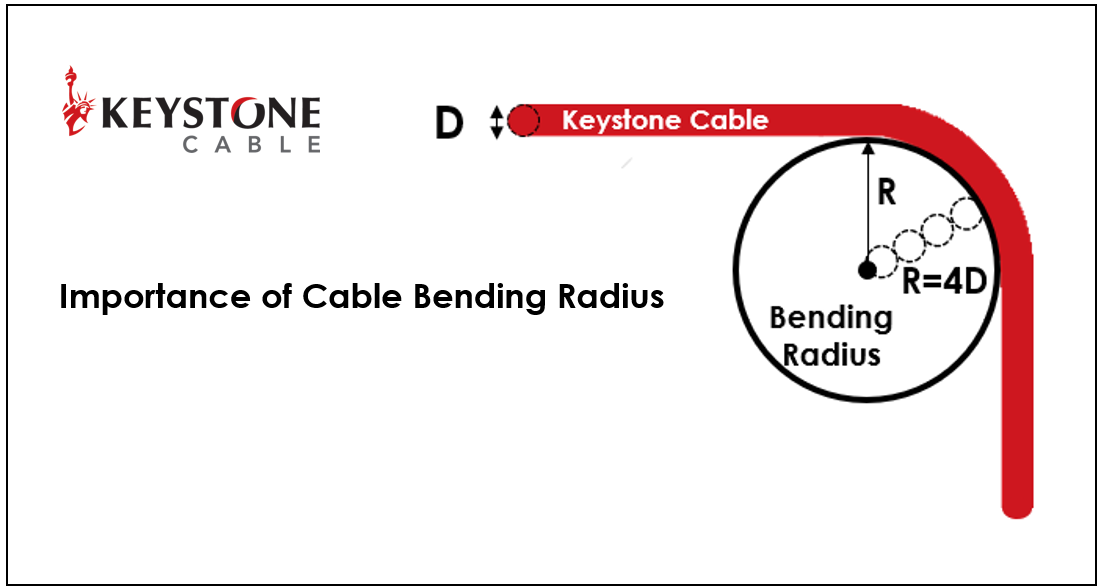
The cable bending radius is the minimum radius a cable can be bent without damaging it. The smaller the bending radius, the greater the flexibility of the material. Knowing your cable's minimum bending radius will help prevent damage during installation.
There are 4 factors that influence the minimum bending radius, including the cable-insulated material, the cable construction, the cable size and the cable's overall diameter.
To install the cables safely without damaging the electrical and physical properties of the cables, the tabulated minimum bending radius must be observed.


For example, you have a Keystone Cable 4Cx16 mm² CU/XLPE/PVC 0.6/1kV cable. According to our Keystone Building & Infrastructure Cable table: D = 21.4 mm; Bending Radius (R) (Fixed) = 4D = 4 x 21.4 mm = 85.6 mm
In addition to the common cable types above, we have summarized the bending radius for multiple cable types in a one-page table, including flexible, control, instrument, thermocouple, bus, welding, HDPE and solar cables.
Feel free to download the table reference for your use. Please note that these figures do not represent all manufacturers’ cables and that the data is based on Keystone Cable’s product range.
For more enquiries, please get in touch with the team here.

